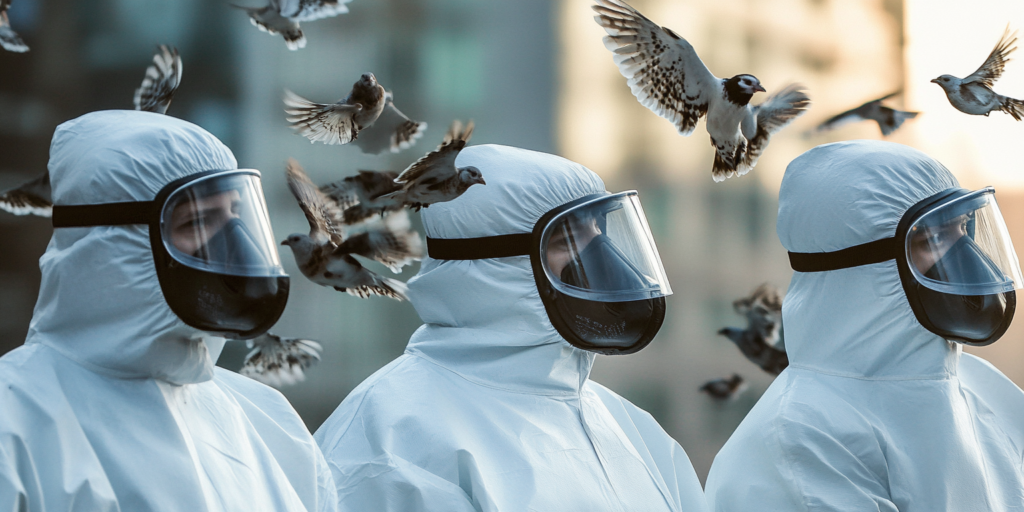This year, the U.S. has reported numerous confirmed cases of bird flu in humans. Experts are highlighting the symptoms, potential risks, and precautions to take in order to avoid infection.
Bird flu, or avian influenza, has been a growing concern as new cases of human infections continue to surface. In 2024, H5N1, a strain of the bird flu virus, has caused alarm, especially after it infected dozens of people in the U.S. and a teenager in Canada, prompting fears of a potential pandemic. Here’s what experts are saying about the risks and the likelihood of a bird flu lockdown.
Table of Contents
H5N1 Outbreak and the Canadian Case
A recent case in British Columbia, Canada, has raised concerns about the spread of H5N1. The infected teenager, who was previously healthy, is currently in critical condition with acute respiratory distress at a local children’s hospital. The source of the infection is still under investigation, but the patient had no known contact with birds, prompting questions about how the virus is spreading. The Public Health Agency of Canada has confirmed that the teen’s illness is linked to H5N1, a strain that has affected birds, poultry, and mammals, including humans.
What is Bird Flu and How Does It Spread?
Bird flu is caused by avian influenza viruses, which primarily affect birds but can occasionally jump to other animals like cows and humans. H5N1, the strain causing recent concern, has been responsible for human infections since 1997. While human cases are rare, the virus can be deadly, causing respiratory issues and even death.
The virus spreads mainly through contact with infected animals, particularly poultry and dairy cows. Infections occur when the virus enters the body through the eyes, nose, mouth, or respiratory system.
Could Bird Flu Cause the Next Pandemic?
Despite the recent surge in human cases, experts believe the current H5N1 strain is unlikely to lead to a global pandemic. According to Dr. Amesh Adalja, a senior scholar at the Johns Hopkins Center for Health Security, the strain doesn’t spread easily between humans. While H5N1 has been infecting humans for years, it has not evolved into a virus that can transmit efficiently from person to person.

Dr. Ian Lipkin, a renowned expert on viral threats, also cautioned that while H5N1 is concerning, it does not appear to be the type of virus that would trigger a pandemic.
The Risk of Lockdowns Due to Bird Flu
Given the current low risk to the general public, the likelihood of a bird flu lockdown is minimal. Dr. Adalja points out that if a pandemic threat were to emerge, lockdowns, similar to those during COVID-19, are not likely to be the go-to response. Instead, health authorities would likely focus on more targeted measures such as increased testing of animals and better containment strategies. If H5N1 were to mutate and become more transmissible among humans, more drastic measures might be considered.
Vaccines and Prevention: What You Should Know

Currently, the U.S. is developing vaccines for H5N1, though there is no widespread vaccination campaign. The CDC has candidate vaccines in stock, which could be used in case of a major outbreak. In the meantime, health experts emphasize preventive measures, such as avoiding direct contact with sick animals and ensuring that meat, especially poultry, is cooked thoroughly. People should also avoid consuming raw milk or eggs, as H5N1 can survive in these products.
Symptoms and Risk Groups
| ymptom | Description |
|---|---|
| Fever | High body temperature, often above 100.4°F (38°C). |
| Cough | Persistent coughing, similar to other respiratory illnesses. |
| Sore Throat | Pain or irritation in the throat, often worsened by swallowing. |
| Muscle Aches | Body aches and fatigue, commonly reported with flu infections. |
| Headache | Often severe, potentially accompanied by dizziness or lightheadedness. |
| Shortness of Breath | Difficulty breathing or a feeling of not getting enough air, common with severe flu infections. |
| Conjunctivitis (Pink Eye) | Inflammation of the eye, may occur in some bird flu cases. |
| Nausea/Vomiting | Digestive issues such as nausea and vomiting can also occur. |
| Risk Group | Description |
|---|---|
| Poultry Workers | Individuals working with or handling infected poultry, at higher risk of exposure. |
| Farmers & Veterinarians | Those in close contact with birds or animals that may carry the virus are at elevated risk. |
| Travelers to Affected Areas | People traveling to regions with ongoing bird flu outbreaks may have a higher chance of contracting it. |
| Immunocompromised Individuals | People with weakened immune systems, such as those undergoing chemotherapy or with chronic illnesses. |
| Young Children & Elderly | Age groups that may have more severe reactions to flu infections, including bird flu. |




